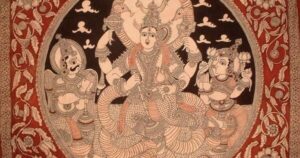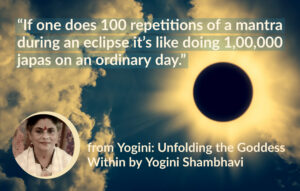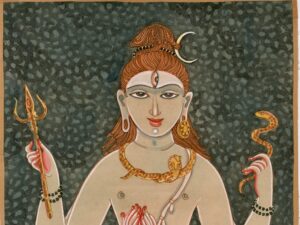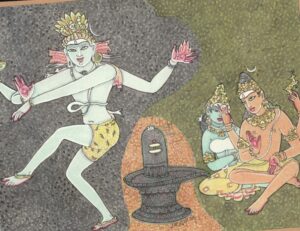The following article is authored by David Frawley (Pandit Vamadeva Shastri) – Sri Yukteswar, the guru of Paramahansa Yogananda, in his book the Holy Science (Kaivalya Darshana) has provided an excellent model for understanding human history through the four Yugas of Hindu thought, which he has explained in a new way that brings much clarity into the system.
The purpose of the present article is to suggest an additional enhancement to Yukteswar’s Yuga theory, adding a set of ‘subyugas’ or minor yugas to add more detail to it.
These additional subperiods can explain historical changes over centuries that the Yuga model of thousands of years can miss.They also tell us why, though we are no longer in the Kali Yuga, that we are still in a difficult time that is likely to continue for some decades.
First of all, let us take a quick overview of Sri Yuktewar’s Yuga theory. Yukteswar proposes a four yuga cycle of 12,000 years with transitional periods called ‘sandhis’ coming in between. Each sandhi is 10% the length of the main period and occurs at both its beginning and end.
Kali Yuga of 1000 years has two sandhis of 100 years for a total of 1200 years. Dwapara Yuga of 2000 years has two sandhis of 200 years for a total of 2400 years. Treta Yuga of 3000 years has two sandhis of 300 years for a total of 3600 years. Satya Yuga of 4000 years has two sandhis of 400 years for a total of 4800 years. This makes for a total of 12,000 years for the cycle of the four yugas.
Yukteswar has the yuga cycles coming in pairs. One set of ‘descending Yugas’ from Satya to Treta, Dwapara and Kali is followed by another set of ‘ascending Yugas’ from Kali to Dwapara, Treta and Satya. According to him the midpoint of the descending and ascending yuga cycles occurred around 500 AD.
In addition to this scheme of Yugas and Sandhis, I am proposing dividing up each Yuga itself into four sections or subyugas of Satya, Treta, Dwapara and Kali in the same relative proportions.
We can divide up the 1000 year yuga of Kali into four yugas, 400 years of Satya Kali, 300 years of Treta Kali, 200 years of Dwapara Kali and 100 years of Kali Kali. We would divide up Dwapara Yuga of 2000 years into 800 years of Satya Dwapara, 600 years of Treta Dwapara, 400 years of Dwapara Dwapara and 200 years of Kali Dwapara. In this manner, we can bring more specificity into the kind of historical changes that we can expect during the long period of each Yuga.
Relative to ‘descending yugas’, I would begin them with the Satya period as they begin with a period in which there is the greatest light. Relative to the ‘ascending yugas’, I would end them with the Satya period in which there is the greatest light.
Below I have listed the regular Yugas and their sandhis (transitional periods) along with the proposed subyugas that occur within each Yuga. This provides the following scheme.
| Ascending Dwapara Yuga proper | 1900 – 3900 AD |
| Satya subyuga | 3100 – 3900 AD |
| Treta subyuga | 2500 – 3100 AD |
| Dwapara subyuga | 2100 – 2500 AD |
| Kali subyuga | 1900 – 2100 AD |
| Dwapara Yuga sandhi | 1700 – 1900 AD |
| Kali Yuga sandhi | 1600 – 1700 AD |
| Ascending Kali Yuga proper | 600 – 1600 AD |
| Satya subyuga | 1200 – 1600 AD |
| Treta subyuga | 900 – 1200 AD |
| Dwapara subyuga | 700 – 900 AD |
| Kali subyuga | 600 – 700 AD |
| Ascending Kali Yuga sandhi | 500 – 600 AD |
| Descending Kali Yuga sandhi | 400 – 500 AD |
| Descending Kali Yuga proper | 600 BCE – 400 AD |
| Kali subyuga | 300 – 400 AD |
| Dwapara subyuga | 100 – 300 AD |
| Treta subyuga | 200 BCE – 100 AD |
| Satya subyuga | 600 – 200 BCE |
| Kali Yuga sandhi | 700 – 600 BCE |
| Dwapara Yuga sandhi | 900 – 700 BCE |
| Descending Dwapara Yuga proper | 2900 – 900 BCE |
| Kali subyuga | 1100 – 900 BCE |
| Dwapara subyuga | 1500 – 1100 BCE |
| Treta subyuga | 2100 – 1500 AD |
| Satya subyuga | 2900 – 2100 BCE |
| Dwapara Yuga sandhi | 3100 – 2900 BCE |
| Treta Yuga sandhi | 3400 – 3100 BCE |
| Descending Treta Yuga proper | 6400 – 3400 BCE |
| Kali subyuga | 3700 – 3400 BCE |
| Dwapara subyuga | 4300 – 3700 BCE |
| Treta subyuga | 5200 – 4300 AD |
| Satya subyuga | 6400 – 5200 BCE |
| Treta Yuga sandhi | 6700 – 6400 BCE |
| Satya Yuga sandhi | 7100 – 6700 BCE |
| Descending Satya Yuga proper | 11,100 – 7100 BCE |
| Kali subyuga | 7500 – 7100 BCE |
| Dwapara subyuga | 8300 – 7500 BCE |
| Treta subyuga | 9500 – 8300 BCE |
| Satya subyuga | 11,100 – 9500 BCE |
I believe that this addition of the subyugas explains a lot historically.
For example, the Satya Subyuga of the Descending Kali Yuga from 600 – 200 BCE was the main period of religious and philosophical development in the ancient world, particularly through the the Indians, the Chinese and the Greeks, when Vedantic, Buddhist, Taoist and Greek philosophies were at there highest. This would agree with it being the Satya or spiritual portion of the descending Kali Yuga.
The Satya subyuga of the Ascending Kali Yuga from 1200 – 1600 AD marked the High Middle Ages, the Renaissance and Reformation in which there was also a development of knowledge in Europe. This would agree with it being the Satya or spiritual portion of the ascending Kali Yuga.
The Descending Dwapara Yuga and its Satya subyuga (2900 – 2100 BCE), Treta subyuga (2100-1500 BCE) and Dwapara subyuga (1500 – 1100 BCE) correspond fairly well with the Old, Middle and New Kingdoms of ancient Egypt. These are the usual periods given by scholars for their main flourishing. After 1100 BCE, the civilization of ancient Egypt declined severely.
In this regard, it is important to note that the current Kali subyuga of the Dwapara Yuga that runs from 1900 – 2100 AD explains our continued global problems even though Dwapara proper has already begun. These problems will probably not be resolved until 2100 AD when the Kali subyuga ends and the Dwapara subyuga of Dwapara Yuga begins.
Presently we stand only slightly more than half way through the Kali subyuga of Dwapara Yuga. The question is whether the second half will be as destructive as the first half.
So the good news that Sri Yukteswar taught, that we are in Dwapara Yuga, needs to be tempered with the fact that we are also in its Kali subyuga. This means that some of the negative influence of the previous Kali Yuga will remain. These are reflected in our current ecological crisis and in the problem of religious fundamentalism and terrorism.
We must also recognize that Dwapara Yuga itself is not a spiritual age like Satya Yuga. It is an age of subtle materialism that brings some development over the gross materialism of Kali Yuga. But the powers that Dwapara develops from electricity to nuclear and the mass media create their challenges as well, along with their more dangerous weapons and possibility of a greater civilizational collapse. The beginning of Dwapara Yuga can result in wars and disasters greater than Kali Yuga because the energies and weapons are stronger!
We should additionally note that the cycle of the yugas does not proceed in a uniform way but through a series of transformations, which can have a destructive side. Often the forces of darkness increase or amass before they are eliminated or cast out. So struggles between the powers of light and the powers of darkness can heighten even in an era of generally increasing light, such as we see today.
The twenty-first century therefore is an important transitional period. As Dwapara Yuga moves forward, the shadow of Kali Yuga lingers on along with the immaturity of the new Yuga. As we are half way through this Kali subyuga that began around 1900, we can expect the next hundred years to present similar challenges to the planet as the twentieth century, though with greater technological capacities and dangers.
Another Level of Subsubyugas
We can add a third level to the Yugas or ‘sub-subyugas’. For the current subyuga these would be.
1900 – 1920 Dwapara Kali Kali
1920 – 1960 Dwapara Kali Dwapara
1960 – 2020 Dwapara Kali Treta
2020 – 2100 Dwapara Kali Satya
In this scheme, we see that the Kali Kali subsubyuga of Dwapara Yuga was marked by the First World War. The Dwapara Kali subsubyuga was marked by the Second World War. The Treta subsubyuga has not yet been marked by another world war but has had the Cold War and now the global war on terrorism.
We are not beyond further World Wars or global calamities. The centralization of the global politics, media and economy as Dwapara Yuga is developing, may make our society more vulnerable to attack and collapse. 2020 will mark a change from Dwapra Kali Treta, in which we are now in, to Dwapara Kali Satya. One should expect more positive developments after that time, though one can still not rule out some major restructuring of human civilization and a good deal of suffering along the way.
In conclusion, I would urge any who follow Yuktewar’s yuga theory to look into the additional possible influence of these subyugas.
Our current global difficulties are not a sign that we remain in Kali Yuga but that we are in the Kali aspect of Dwapara Yuga. During this dangerous period we have the new energy of Dwapara Yuga but have not yet learned the wisdom to use it properly. This period will last throughout the coming century! So major shifts are yet to come.







